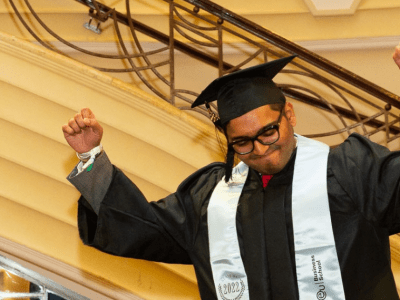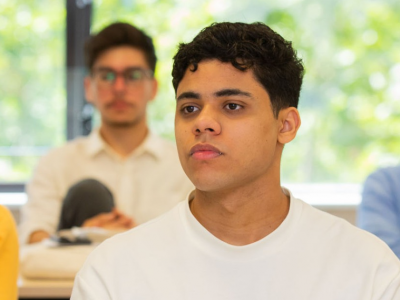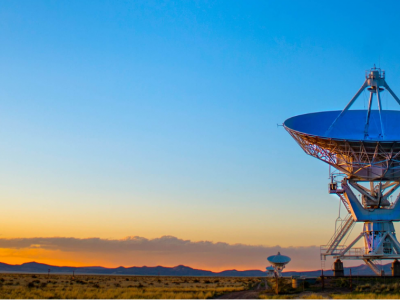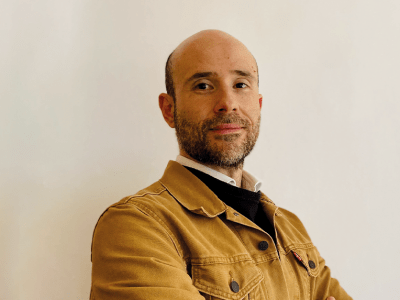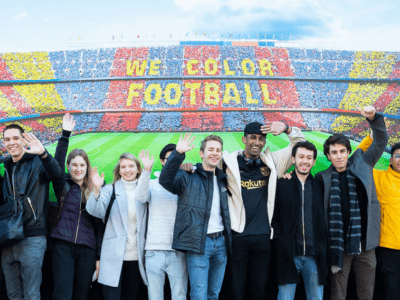Students in the Post-COVID-19 Era: From Job Seekers To Job Creators
It will take innovation and job creation to improve the currently unpredictable economic climate. Fortunately, this is the focus of Pablo Santaeufemia’s daily work. EU Business School students received a fascinating presentation from Pablo, who has become a successful entrepreneur by building the infrastructure that supports the entrepreneurship of others.
About the Speaker
Pablo was born in Madrid to a low-income family. Later, he received a scholarship to study at an international school in the United States. This was a revelatory experience, as he was able to meet people from all over the world and understand that talent was everywhere. What was lacking was opportunity. This interest in inequality led him to pursue studies in international relations, where he realized that the old systems were redundant; he wanted to find new channels to make change.
During time spent volunteering in India, Pablo began to notice problems with traditional international development projects. He was particularly concerned by the fact that recipients of aid were not involved in the planning process, and this meant that the interventions were often inadequate or unsustainable. He wondered what would happen if local people were instead equipped with the resources to enact their own solutions.
Pablo undertook internships and scholarships in many different countries. He studied diverse subjects such as mechanical engineering, Chinese, technology and innovation management. While working as a mechanical engineer for a British company in China, he became disillusioned by the fact that the work he did on sustainable buildings would only really benefit billionaires. What inspired him was the prospect of projects that would benefit the billions instead.
The Birth of an Idea
Pablo was inspired by Paul Polak, an American who went to Nepal to work with farmers and started International Development Enterprises: a business solution to poverty. Realizing that he alone would not be able to design products and services for the “bottom billions,” Pablo instead looked for a more efficient model which would empower local innovators. As he worked on his thesis on agriculture in Kenya, it became obvious that what local people needed wasn’t ideas or technology, it was the business understanding to sustainably manifest their own solutions.
Switching his focus to the overall system, Pablo saw that the difference between high income and low income regions was the proliferation of small- and medium-sized enterprises (SMEs). SMEs are the engine of any economy. In low-income countries, there were micro-enterprises, so the question became “how can these micro-enterprises become small- and medium-sized enterprises?” By building up this “missing middle,” entire economies could be improved. This was key to having a widespread impact.
Levels of entrepreneurship vary between countries, and Pablo identified that the infrastructure available for entrepreneurs had a huge impact. Some countries had introduced measures to facilitate greater levels of entrepreneurship, and they were enjoying transformative results. Pablo decided that he would focus on improving the entrepreneurial ecosystem so that people beyond the typical demographic – wealthy white men – were supported to build their businesses. In his presentation, Pablo highlighted that entrepreneurs tend to solve the problems they experience. This means there is a huge lack when it comes to problems that exist beyond the experience of this dominant demographic. To solve problems beyond those of the elite, it was necessary to democratize entrepreneurship.
Entrepreneurship Ecosystem Model
In his presentation, Pablo shared a model which showed various stakeholders and how their choices could impact a country’s ability to develop entrepreneurship. Universities, governments, corporations, risk capital firms and entrepreneurs themselves were all included. Pablo emphasized the importance of models which connected these actors. He used the example of MIT in Boston as a university which could be considered a “factory for entrepreneurs” because of the successful way that it engages corporations and investors.
Seeing a gap in entrepreneurs’ access to these key actors, Pablo decided to design a service which would act as a bridge. Although other entrepreneur programs did exist, he saw many problems with them:
- They had a limited capacity.
- They only existed in big cities.
- They had high operating costs.
- They were time consuming and difficult to monitor.
These issues meant that they were inaccessible for many potential entrepreneurs.
Bridge for Billions
In response to this need, Pablo designed the Bridge for Billions program.
This consists of a “Tinder for mentors”, where entrepreneurs can be matched with volunteer mentors and receive 15 hours of personalized guidance. It also supports participants to build a visual business plan which functions as an effective pitching tool when seeking investment. Participants gain access to an online community where they can share ideas and opportunities with like-minded people, including Bridge for Billions alumni.There’s also the Learning By Doing platform, a gamified app almost like Duolingo that supports entrepreneurs to develop their business model step by step.
Beyond their own program, Bridge for Billions designs programs for a range of organizations including corporations, foundations, universities, governments and international agencies.
Democratizing Entrepreneurship
Entrepreneurship ecosystems have not been meritocratic. Those with the status to access resources and the resources to make multiple mistakes are the people who typically succeed. Although the successful undoubtedly work hard too, they have benefitted from greater opportunities than those who fail. This inequality needed to be addressed.
With his company Bridge for Billions, Pablo has improved the outlook for entrepreneurs of diverse backgrounds. His program is designed to make entrepreneurship more accessible to people who do not have automatic access to finance and mentors. Bridge for Billions, now in its 6th year, has supported 1700 entrepreneurs from 72 countries. 44% are female founders, compared to an 11% global average for entrepreneurship programs.
70% of participants who complete the program remain active two years later. This is important because usually there is a huge dropoff between the concept stage and becoming a validated business, where job creation would take place. It shows that Bridge for Billions is succeeding in supporting participants to build sustainable small- and medium-sized enterprises, which will in turn strengthen the local economy.
Acknowledging Inequality and Taking Action
One of Pablo’s key pieces of advice for budding entrepreneurs was to accept the fact that luck and background play a huge role in whether someone is successful or not. However, he did not deliver this message in a demotivating way. Instead, Pablo used his program as an example of what can be achieved when the focus is on factors that can be changed. Bridge for Billions shows what is possible when talented people are provided with the tools to fulfil their potential: entire economies benefit.


